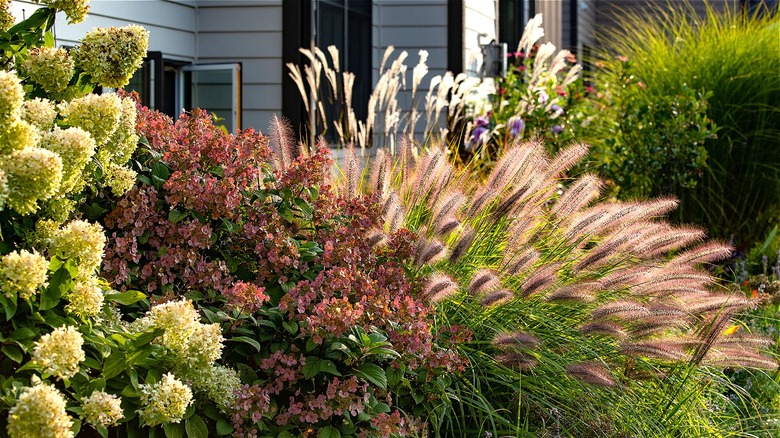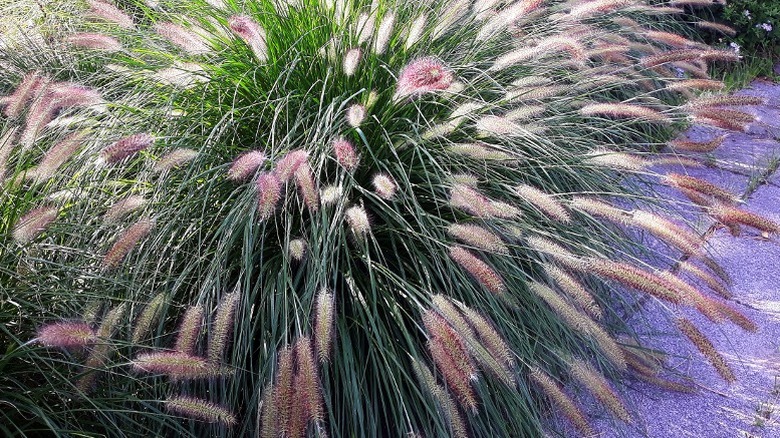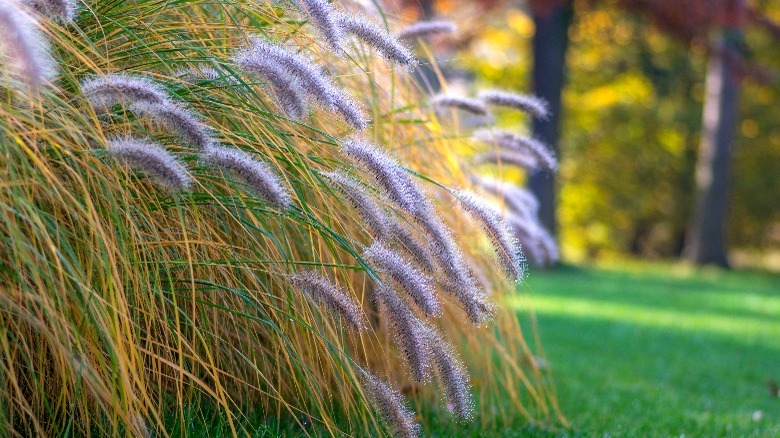The Garden Favorite Birds Love, And Deer Can't Stand
From its graceful arches to its beautiful green that lasts throughout the colder months, Hameln fountain grass (Pennisetum alopecuroides 'Hameln') is a popular nesting option for birds. Placing it in your flower beds or at the end of your driveway encourages lots of bird activity but also works as a nice deterrent for deer. If you're tired of deer munching on your beautiful perennials and still want something visually stunning in your landscape, this particular ornamental grass works well in many environments.
Hameln fountain grass is one type of ornamental grass that's easy to add to your landscape for several reasons. In the right environment, it grows quickly and easily without a lot of work to support it. You won't have to spend hours trimming and cleaning it up like other types of ornamental grasses. At the same time, it's also a color-changer, which allows it to work well in any environment when you want fabulous grass to add dimension and character to your yard.
Hameln isn't necessarily a large plant, lending itself to patches and clumps that are about 2 feet or slightly larger in width, which is also what makes the grass excellent for edging. If you hope to plant flowers deer tend to eat, position Hameln fountain grass on the outskirts of the flower bed to deter deer from trying to munch on them. Deer aren't hurt by these plants, but they also aren't likely to eat them (or the blooming flowers that are blocked from them as a result.)
Why Hameln fountain grass works so well against deer
Like other types of ornamental grasses, deer simply don't prefer Hameln fountain grass over other, more readily available vegetation. This ornamental plant doesn't necessarily have a strong scent or any toxins to lure deer from it, but it's not on their preferred list of plants to eat. One of the reasons for this is that this grass has a coarse texture, which is significantly different from other types of plants and foliage deer prefer.
At the same time, this grass also works well to provide birds with a bit of protection from prey and the elements. Because the ferns are long and arched, with a significant amount of bushy-like density, there's more protection for birds who are looking for a habitat to protect them and their nests throughout the year. Hameln fountain grass maintains much of its foliage into the colder season, though it turns more of a yellowed or pale color than it has during the summer.
For those looking for a way to encourage birds to move in but don't want to plant trees or flowers that deer will simply chomp on, hameln fountain grass can offer the best results, especially if you're in Zones 5 to 9. Placing several of these plants next to each other creates a powerful border that will prevent deer and various other garden pests from entering the vegetation nearby.
How to use Hameln fountain grass in your landscape
There are a few things to know about Hameln fountain grass if you plan to use it in your landscaping. First, make sure you have plenty of space for this deer-resistant plant to grow. Hameln grass does best in full sun, so shade from trees or shrubs can limit its ability to do well. Giving it about 3 feet of space on all sides encourages the plant to grow well and full, which will ultimately contribute to being a better habitat for birds. The grass can reach as high as 3 feet as well. This is a smaller version of ornamental grass compared to those that are nearly twice as tall.
Plant this ornamental grass in well-draining soil that's kept moist most of the time. Once in place, you'll be able to cut it back and manage it with ease. It doesn't require a lot of maintenance throughout the year, though cutting it down in the late fall before winter will allow the root to build energy to bloom bigger in the spring.
You'll notice the plant starts with a beautiful, fern-like look with green fronds. Over the hot summer, those leaves will become a bit yellowed until they're very pale during the late fall. This is a great time to cut them back and bring this wheat-like plant into your home to use in centerpieces. The beautiful rust gold color in the fall makes it a nice choice for lining your holiday table with natural elements.


